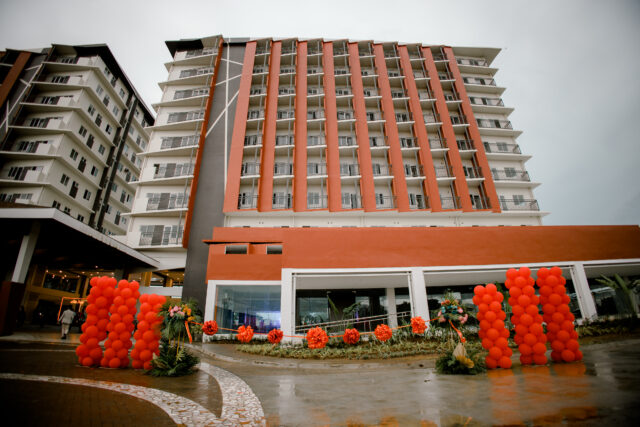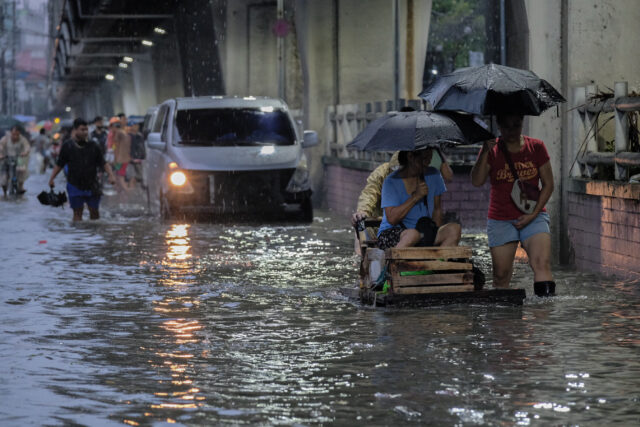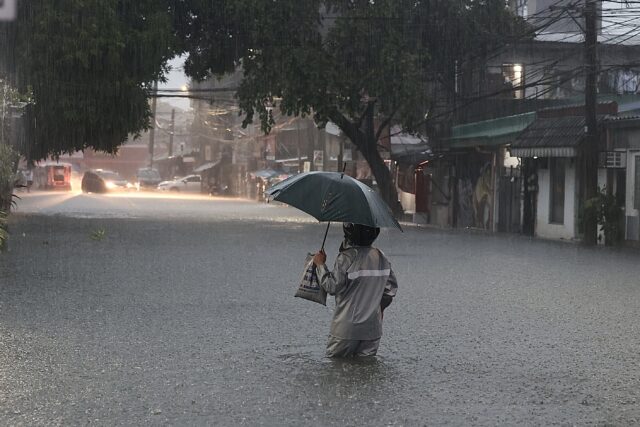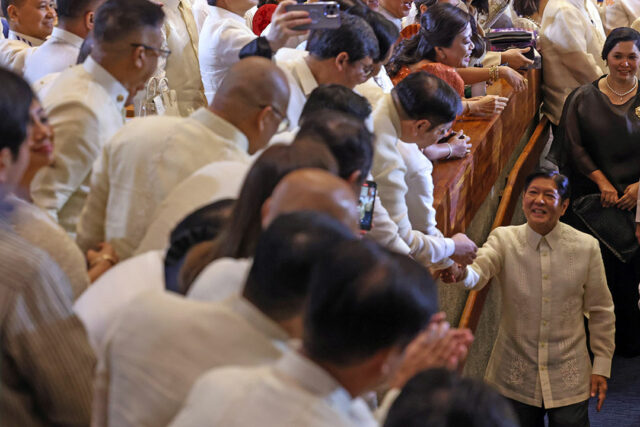By Revin Mikhael D. Ochave, Reporter and Aubrey Rose A. Inosante
PROPERTY STOCKS slumped on Tuesday amid concern the ban on Philippine offshore gaming operators (POGOs) will leave many office and residential buildings empty.
At the Philippine Stock Exchange (PSE), the property index closed 1.62% or 44.24 points lower to 2,681.82, a day after President Ferdinand R. Marcos, Jr. ordered a total ban on POGOs in the country. The main PSE index rose by 0.61% or 41.07 points to end the trading day at 6,753.12.
In his State of the Nation Address on Monday, Mr. Marcos also instructed the Philippine Amusement and Gaming Corp. (PAGCOR) to wind down and cease operations of all POGO facilities by the end of 2024.
“(Tuesday’s) performance of the property index was largely influenced by the POGO ban. In the sector, we can see that DoubleDragon Corp. and DDMP REIT, Inc. were the biggest losers, plunging by 5.2% and 5.17% respectively, as these two have the most exposure to POGOs among the property firms in the market,” Philstocks Financial, Inc. Research Analyst Claire T. Alviar said in a Viber message.
DDMP REIT shares fell by 5.17% or six centavos to P1.10 apiece, while DoubleDragon stocks retreated by 5.2% or 62 centavos to P11.30 each.
Stocks of SM Prime Holdings, Inc. also dropped by 2.45% or 75 centavos to P29.90 per share, while Ayala Land, Inc. shares dipped by 0.94% or 30 centavos to P31.60 apiece.
“The ban will definitely have a negative impact on exposed firms, particularly DDMP REIT as 51% of their total rental income for fiscal year 2023 came from a mix of POGO and PAGCOR-accredited business process outsourcing firms,” AP Securities, Inc. Research Analyst Jose Antonio B. Cipres told BusinessWorld in a Viber message.
Some analysts noted that several developers have already made significant efforts to lower their POGO exposure during the pandemic.
Ms. Alviar said most property companies have “less than 5%” exposure to POGOs, so the revenue impact could be “minimal to insignificant for some.”
“It’s important to remember that all the major real estate players have already limited their exposure to POGOs, so any loss in lease income should not materially affect their earnings outlook or long-term prospects,” China Bank Capital Corp. Managing Director Juan Paolo E. Colet said in a Viber message.
Richard G. Laneda, COL Financial Group, Inc. research senior manager, said in a market note that the POGO ban will have a “minimal” impact on the companies being covered by the stock brokerage.
“While some listed companies still have POGO operations, their exposure to POGOs has significantly decreased since its peak in 2019. The direct impact on listed companies is now minimal, compared to in 2019 when Megaworld Corp.’s exposure was 10% and Filinvest Land, Inc. was 15%,” he added.
“However, industry-wide gross leasable area occupied by POGOs will significantly lower average occupancy rates,” he added.
However, Ms. Alviar said the decline in property stocks is just a “knee-jerk reaction.”
“Bargain hunting is anticipated especially to property firms with low exposure to POGOs,” she said.
IMPACT ON BAY AREA
Some real estate consultants said they expect office vacancy levels to rise in certain areas where POGOs are concentrated such as the so-called Bay Area.
“We anticipate an increase in vacancy levels in the office and residential markets in select areas of the Metro where they are concentrated,” JLL Philippines Head of Research and Strategic Consulting Jan-Loven C. de los Reyes told BusinessWorld on Tuesday.
In an e-mail to BusinessWorld, Prime Philippines said the Bay Area, which hosts a substantial number of POGO companies, is expected to be the most affected. Other areas that may experience “slight to moderate impacts” from the POGO ban include Makati, Cavite, Mandaluyong, and Clark, Pampanga, it added.
Mr. Cipres said one area that could see an uptick in residential vacancy rates is the Bay Area, where many condominiums are home to POGO workers.
Leechiu Property Consultants, Inc. Founder and Chief Executive Officer (CEO) David Leechiu said the POGO ban will be detrimental to the recovery of the local property sector.
“POGOs will vacate a million square meters of office space and probably the same amount of condominium space. The office spaces in the Bay Area will be affected and vacated at a time when there is still so much office space in the market. Rents will continue to come down and become softer,” Mr. Leechiu said.
Mr. Leechiu said the harder hit segment will likely be the midrange residential condominium market, which has many spaces for lease. He expects vacancies to be “quite high for a long time.”
“We have to see how the market will absorb the additional supply of office spaces and residential units from POGO tenants and landlords. A potential glut could put downward pressure on real estate rents and prices in certain locations with high POGO exposure,” Mr. Colet said.
Joe Curran, CEO of real estate brokerage and consultancy firm KMC Savills, said in a Viber message that the overall impact of the ban will be “minimal and manageable.”
“The advantages of the restrictions on this (POGO) industry could outweigh the associated risks. This could also further help position the country as a transparent and world-class destination for inward investment,” he said.
Mr. Leechiu also expects the recovery of the property sector to be delayed due to the POGO ban.
“The ban will delay the recovery of the office market by a year, with 2028 now seen as full recovery. For the residential market, it will be two more years, now in 2029,” he said.
“The biggest impact there is on sentiment because there’s supply overhang, many buyers will not want to buy. If people don’t buy, the developers will not build. This will hit the construction industry more,” he added.
Meanwhile, Maria Rochelle S. Diaz, executive vice-president for commercial of listed luxury developer Shang Properties, Inc., told reporters at a media briefing that the POGO ban will not affect the company.
“The profile of our buyers is mostly Filipinos. We have a healthy mix of foreign buyers which are not China-based, so we’re not as affected,” she said.
BENEFITS OF POGO BAN
National Economic and Development Authority Secretary Arsenio M. Balisacan told reporters that the benefits of banning POGOs outweigh its costs, citing its low contribution to growth.
“We are likely losing from the presence of these POGOs because of, for example, tourism. China has made it clear that cross-border tourism is likely to be regulated by them for countries that host those POGOs,” he said.
POGOs contributed less than 1% to gross domestic product in 2022 alone, Mr. Balisacan said.
“When I said that one-half of 1% of GDP is what the POGOs contribute, that already takes into account the properties,” he said. “The social cost and reputational cost to the country of hosting these kinds of businesses is not good at all.”
Mr. Balisacan said affected POGO workers could be absorbed by the information technology-business process management sector.
Meanwhile, Finance Secretary Ralph G. Recto said firms using legitimate internet gaming licenses will not be affected by the POGO ban.
“I don’t think they’re POGOs, that’s different,” he told reporters on Tuesday.
Mr. Recto had recommended the POGO ban to the President.
“It only shows that the President is also sensitive and listening, especially with regard to issues of this nature… criminality, and its reputational risks to us… so, it’s hard to quantify that,” he said. — with inputs from B.M.D.Cruz



















